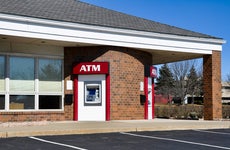What is a community development financial institution (CDFI)?

The Bankrate promise
At Bankrate we strive to help you make smarter financial decisions. While we adhere to strict , this post may contain references to products from our partners. Here's an explanation for .
You might not have heard of community development financial institutions (CDFIs) before, but they’re an important part of the financial services industry. CDFIs address financial needs that are frequently overlooked or avoided by traditional financial institutions due to associated risks and costs.
The main function of CDFIs is to promote community development, particularly in low-income and minority communities. There are a number of unique challenges faced by these communities that CDFIs aim to assist with.
CDFIs come in a few different forms, such as banks and loan funds. But not just any institution can be a CDFI — it must fulfill several eligibility requirements.
What is a CDFI?
In short, a community development financial institution (CDFI) is an organization that provides financial services to low-income and underserved communities. The CDFI designation comes in the form of a certificate given by the CDFI Fund, which is overseen by the U.S. Department of Treasury.
A financial institution must meet the following requirements to be eligible for CDFI certification:
- Be primarily focused on promoting community development
- Provide financial and educational services
- Serve and be accountable to a specific target market
- Be a legal and non-governmental entity.
Certified CDFIs are eligible for a number of financial awards to help fund their community development initiatives. These initiatives include things like mortgage lending to first-time homebuyers, financing sustainability efforts in low-income areas and providing commercial loans to small businesses.
How many CDFIs are there?
As of November 2022, there are 1,376 CDFIs across the country, according to the CDFI Fund.
These are broken up into five categories:
- Loan funds: These make up the largest portion of CDFIs (about 40 percent). They are typically nonprofit organizations that provide lending to small businesses, affordable housing developers and other community service organizations.
- Credit unions: There are 472 certified CDFI credit unions, which are member-owned, not-for-profit financial institutions.
- Banks: Banks account for almost 13 percent of CDFIs. They help economically distressed communities by providing lending and investments.
- Depository holding companies: These are companies that control one or more banks or savings associations. There are 143 that are CDFI certified.
- Venture capital funds: Only 15 venture capital funds are CDFIs, but they have the important role of providing equity to businesses in distressed communities.
What does a CDFI do?
CDFIs help ensure that communities who have historically been underserved by mainstream finance can access essential financial services, such as lending, investments and other forms of funding. These financial services contribute to the development of local communities and fortify working-class neighborhoods.
The CDFI Coalition states that CDFIs measure success both by “economic gains and the contributions they make to the local community.” This means not only providing assistance to disadvantaged groups but also giving them the resources they need to become self-sufficient and economically flourish.
Some ways that CDFIs have historically achieved and continue to further their mission of building up underserved communities include:
- Offering training and technical assistance to those who are economically disadvantaged
- Lending to those with limited or poor credit histories
- Lending to build affordable housing and community facilities
- Providing equity and expertise to small and often minority-owned businesses
A recent initiative by ten CDFIs in partnership with the Aspen Institute, for example, is targeting small business job quality. The initiative, called “Shared Success,” will focus on financing and advising small businesses to help them improve worker compensation, employee satisfaction and basic benefits.
According to the Opportunity Finance Network, CDFIs helped create 2.19 million jobs, 2.23 million housing units and over 13,000 community facilities in 2020.
The CDFI Fund
The CDFI Fund is a crucial hub of support for CDFIs. Administered by the U.S. Department of Treasury, the CDFI Fund provides CDFI certification and financial assistance. It was created in 1994, but its creation was anticipated by several key historical developments.
In the 1960s and 70s, a number of community development-focused organizations emerged from the government working to combat poverty and racial discrimination. These organizations came to be known as community development corporations (CDCs) under the Johnson Administration.
CDCs continued to expand in the 1970s and 80s, with federal funding being used to support business development in disadvantaged communities. The Neighborhood Reinvestment Corporation was also established in 1973, and it began financing affordable housing in 1978.
Efforts of the government to support and expand organizations that focus on community development culminated in the establishment of the CDFI Fund as well as a revision of the Community Reinvestment Act (CRA) in 1995. The revision allowed loans and investments in CDFIs to be federally recognized.
Today, the CDFI Fund offers grants, investments and awards for CDFIs through programs such as Native Initiatives and the Bank Enterprise Award Program.
What is the difference between a bank and a CDFI?
While some CDFIs are banks, not all of them are. CDFIs also include credit unions, loan funds, depository holding companies and venture capital funds.
Additionally, CDFIs must have a mission of promoting community development above all else. Traditional banks may consider it too risky or too costly to invest in communities that have been socially and economically sidelined.
Many CDFIs build deeper relationships with their customer base and the community leaders they work with. They typically offer a variety of educational services in addition to financial services to help communities navigate difficult economic situations while traditional banks may only offer financial services or limited educational services.
Still, banks that are CDFI certified offer deposit accounts just as any other bank would. In many cases, these deposit accounts are available to anyone, and anyone can support a CDFI by doing their everyday banking with or taking out a loan from one. See the full list of CDFIs through the CDFI Fund website.
Bottom line
While traditional banks may avoid the risk of investing in distressed communities, CDFIs make it their mission to help those who have been historically underserved. They also have support from the government through the CDFI Fund.
CDFIs serve the important purpose of building up and rebuilding impoverished or otherwise neglected communities, helping more individuals across the country fulfill everyday financial needs and achieve self-sufficiency.
Related Articles



